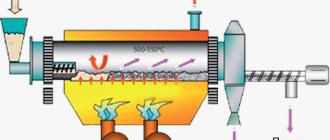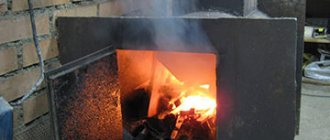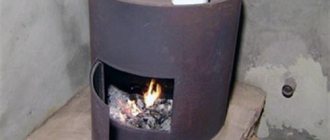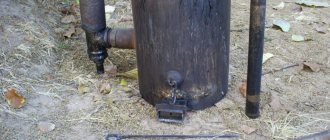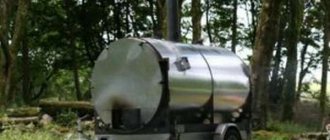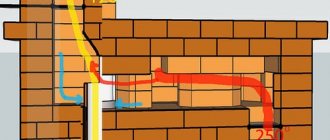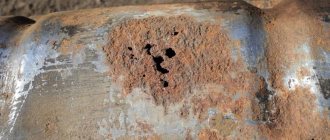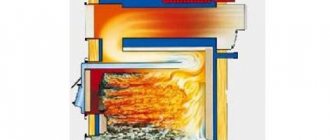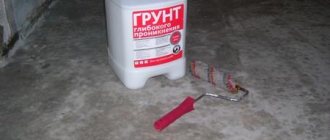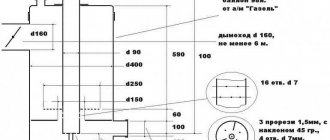Read the article on how to choose the best equipment, buy a ready-made stove or make it yourself.
At the dacha, waste disposal can be a real problem. The way out of this situation is to use a stove. You can buy it or make it yourself. Both options have their pros and cons. To burn garbage safely, you need to choose the right hearth design. We have deeply studied this topic and are ready to share with our readers what stoves exist for country waste, and how to choose them correctly.
What kind of waste can be burned on your property?
All sorts of garbage accumulates in summer cottages. In most cases, you can dispose of it yourself. The waste is burned to free up space on the site. But only the following waste can be disposed of in this way:
- dry grass;
- paper;
- boards;
- tree branches and trunks;
- rags;
- weeds;
- food waste;
- paper and cardboard packaging for food and drinks;
- old tops.
Such garbage can be safely sent to the furnace. But there is a list of waste that cannot be burned in a stove. These include:
- plastic;
- glass;
- electronics;
- metal;
- synthetic fabrics;
- aerosol cans;
- painted boards (except water-based coatings);
- posters, paper with thick ink filling;
- chipboard;
- other materials, items containing chemical components.
Such waste releases toxins when burned or is not disposed of in this manner. They are sent to special processing centers.
Therefore, before sending the waste to the furnace, it is sorted. If there is waste prohibited for such disposal, it is taken to a place designated for recycling.
Interesting video of a furnace for burning garbage in the countryside with your own hands
Let's consider a couple of barrel options:
1. Take a barrel, and take a chisel or a crowbar, or otherwise take a tool to make more holes in the barrel.
We make holes only halfway down the barrel; this is necessary for air circulation in the barrel and for faster combustion of leaves and debris.
We also make holes in the bottom of the barrel.
But you ask me why in the bottom if it will stand on the ground and air will not get there?
- I will answer. To do this, the barrel needs to be placed on a raised platform, the ideal way would be bricks, you can also put other fire-resistant material.
To be honest, I myself have such a stove at my dacha, and I’m very pleased with it.
2. I also like the other way. Immediately you need to completely remove the bottom, I think an excellent way to remove it would be a grinder, or a chisel, but you will spend a lot of time and effort.
Then you will need to dig a hole with a bayonet shovel approximately 1 meter long, and let’s take a bayonet shovel as an example, 21-26 cm in width, 1 bayonet shovel in depth.
In this hole we install our barrel, which already has no bottom, it should look like a cylinder. As a result, we will have an excellent one, which will instantly burn all the garbage.
So, first you will need to throw garbage into the hole, and only then put the barrel, so the role of the hole will be played by some kind of air duct, and will serve you for the constant destruction of garbage.
You can also put protection on top of the barrel.
Now let's look at the advantages of the barrel:
— Garbage burns faster
- You can throw large pre-measures, the boards will have leaves and will not fly apart.
- Burns completely to the ground
— Garbage that has been burned can be used as high-quality fertilizer
— Burn safety
This concludes our article. Happy building!
A barrel for burning garbage in the countryside with your own hands is a design that can be found in garden plots not so rarely. However, not every gardener knows how to make a stove out of a barrel that is as efficient and convenient as possible. But most importantly, not everyone knows that burning waste in a dacha is generally prohibited by law. This article is about the nuances of getting rid of garbage at the dacha.
Before using a barrel to burn garbage in your country house, it is better to carefully study the law.
Environmental services also say environmental damage is caused by burning dried plants. Burning plant waste, especially in spring, often leads to numerous fires, which sometimes cover vast areas and end very badly. Fires for burning grass lit in the city have a negative impact on many residents with hypertension, asthma and other diseases.
Often, employees of various environmental services and fire safety inspectors carry out raids on personal plots in order to identify fire safety violators and carry out explanatory work with them. However, many “arsonists” ignore warnings until they are brought to administrative responsibility.
The ban on burning waste is stipulated in the Federal Law “On the Protection of Atmospheric Air”.
For failure to comply with the provisions of the law, a citizen may be held accountable and subject to a fine. The following fines are provided for different categories of persons:
- for ordinary citizens – 2,000 – 3,000 rubles;
- for citizens who are officials - 6,000 - 15,000 rubles;
- for individual entrepreneurs – 20,000 – 30,000 rubles. (or suspension of business activities for up to 90 days);
- for legal entities – 150,000 – 200,000 rubles. (or suspension of activities for 90 days).
The amount of fines may vary depending on the region of the country and the time of year (for example, during the established fire regime period in May, the amount of fines increases for all persons).
In addition to such monetary compensation, persons whose waste burning led to a fire will have to pay certain amounts of money for environmental damage caused.
Environmental services employees recommend that summer residents use compost pits to dispose of plant waste. To dispose of other waste, it is necessary to resort to the services of specialized companies for the removal and/or processing of household waste.
This video talks about the ban on burning waste in summer cottages and how service employees identify violators.
Having studied the legal aspects, we can say that it is still possible to burn vegetable waste at the dacha, but at the same time, all the requirements of the fire safety rules established by the Ministry of Emergency Situations must be complied with, and places for burning must also be agreed upon with fire service employees .
Homemade or ready-made firebox?
There are arguments both for and against both options. Homemade structures are much cheaper than ready-made ones. They have a simple design, which simplifies maintenance. But there are also disadvantages. For example, it is impossible to create a complex, high-quality device at home. Primitive equipment can only burn garbage. It cannot perform other functions.
To make a structure for recycling country waste, you need to know how to use a welding machine. The master must have the appropriate tool, as well as the necessary materials. Thin-walled metal is not suitable for these purposes, and it is difficult to make a high-quality weld in thick metal using a household welding inverter.
Purchased products cost more, but their design is more functional. The heat generated by the equipment can be used to heat your home or cook food. It is durable and has good build quality. You do not need to have a welding machine on hand and know how to weld sheets of metal. Therefore, for many summer residents it is much easier to buy a fireplace.
The appearance of purchased models is better. Many of them have smoke filtration systems that reduce the amount of harmful emissions into the atmosphere.
Vertical oven: materials, instructions
Before you figure out how to make a barrel for burning waste, you need to prepare a number of materials:
- garden shovel
- chisel
- hammer
- welding machine and 4 legs (in the situation if the metal barrel will be placed on a surface in which it is impossible to dig a hole)
- electric drill
- 200 liter barrel
- bricks for the stand
Next, you should start creating the oven:
- The top cover of the barrel is removed using a chisel and hammer.
- Using an electric drill, several holes are drilled in the bottom cover, which are responsible for the draft of air during the combustion process.
- Using a shovel, dig a medium-sized hole (about a meter), and onto it, for traction, the barrel is placed with the holes facing down. To increase stability, you can use bricks.
This method of making a stove is lighter than the horizontal version, but the design is less durable.
Purchased models
The finished stove consists of a metal casing that prevents sparks from falling out during the combustion process. It is made of sheet metal with a minimum thickness of 3 mm. The body is covered with heat-resistant enamel, which prevents the development of corrosion. The dimensions of the finished models are relatively small. When cold, it can be easily transported from place to place or loaded into the trunk of a car.
There are grates inside the firebox. They look like gratings, most often made of cast iron. The combustion process occurs on the grates. Large debris remains here until it becomes ash. Grate bars are also needed for the flow of oxygen, which supports the combustion process.
There is a blower door at the bottom. When it is slightly open, air enters the firebox, enhancing the combustion process. Subsequently, you can rake out the ashes from here and use them as fertilizer.
The top cover will protect the fire from rain and bad weather. It limits the flame, preventing sparks from flying up or flying away. The design may have vertical loading of waste. In this case, the firebox door will not be on the body, but on the lid.
What's in stock
The main problem of waste disposal from private household plots is the presence of municipal solid waste (MSW); They are the ones who turn the material for disposal into a rather dangerous substance of unpredictable composition and properties. Therefore, the main product in this segment of the consumer goods market is a garden waste incinerator. Load composition – branches, twigs, tops, fallen leaves, etc. Although it's bad, it's fuel. Manufacturers specifically warn in their instructions: you cannot burn solid waste in their stoves.
Unfortunately, high technology is not encouraging in this regard. The maximum that a household oven for garbage represents in an age exploring the origins of the Universe, the foundations of reason, the quantum world and planning interstellar flights is a hybrid of the good old leaky iron barrel and a country-garage potbelly stove. The technical difference from the latter is essentially one thing - an excessively inflated firebox: the efficiency of the device does not matter, but more material needs to be crammed into it.
The entire variety of industrial-made household waste ovens essentially comes down to 3 designs:
- The same good old barrel, equipped with a top lid, a fuel door, a grate, a blower and an outlet to the chimney (pos. A in the figure below);
- The same device, square or rectangular in plan (pos. B). Thus, the stove is “masked” as a household trash container;
- An installation that is actually similar to a leaky barrel without a chimney, but equipped with a lid, handle and wheels for transportation around the site and a stop for installation at the place of use (item B).
Types of garden stoves for burning industrial waste
The last improvement is important, because... Rolling the incinerator from heap to heap is much simpler and easier than dragging heaps of leaves and armfuls of tops to it. The prices for factory-made devices for this purpose are very worthy of the 21st century (see below). However, both “cool” and “budget” household waste incinerators, factory-made, and on ordinary garden waste, perhaps smoke more than a properly equipped leaky barrel for the same purpose, see below. In any case, it is enough (see next figure) to attract the attention of representatives of law enforcement and/or supervisory authorities.
Garden stoves for burning industrial waste on the go
Nevertheless, a product of this kind is in sufficient demand under the “ecological sauce” - the cost of its production is negligible, and the “gain” is calculated in many tens and hundreds of percent (!). Currently (end of 2021) in the Russian Federation you can buy household waste incinerators of the following models (in ascending order of price):
- “A dacha according to the mind” - it would be better to call it “without further ado.” Converted 200 liter fuel drum. OK. 3000 rub. Chimney – optional, still approx. 1000 rub. The chimney is good, sandwich type with a Grigorovich deflector. With a chimney there is almost no smoke, even if the material being burned is damp;
- “Barrel” is round, quite thick-walled (approx. 4 mm). With a perforated bottom, without a chimney, fire door and vent. On raw material and when loading new material it smokes a lot. OK. 4000 rub.
- “Barrel” is the same thing, with a blower. OK. 5700 rub.
- MD-25 is a popular model on wheels for burning leaves. Quite capacious. It's quite difficult to roll on the ground. OK. 6500 rub.
- MCJ - the same, but smaller capacity and lighter. It's not difficult to ride. Prices of analogues from various manufacturers range from 7,500 to 19,000 rubles. They explain it by the different capacity and quality of the metal. Stainless steel MSJ priced at RUB 10,000. (in current terms) serve for more than 15 years;
- "Terminator", "Incinerator", "Recycler" – square “container type” with a combustion door, a vent and a chimney. Combustion is regulated by setting the air flow. There is almost no smoke when the material is raw and when it is reloaded, if you know how to adjust the air (instructions are included). Available in sizes S, M, L and XL with capacities from 50 to 375 liters. Prices from 8,000 to 75,000 rubles. About the Terminator XL oven, see video review:
Video: review of the Terminator XL oven
- POD-02 is a square top-loading container (without a fuel door). There is a blower and a chimney. Adjustment of air supply - blower door. Country waste incinerator of small capacity. OK. 9000 rub.
- “Keg” Optima – “Keg” from item 2 with a blower. OK. 9000 rub.
- SM-50 – country house (top loading 50 l) on wheels, with a blower and a removable chimney. OK. 9500 rub.
- SM-160 Super – round, 160 l, top loading. Not mobile (you can put it on wheels, but two people will have to ride it). OK. 10,000 rub.
- “Mistress” – square “under the container”. Adjustment of air flow by blower door, top loading, top exit to the chimney. Smokes when loading raw material. OK. 11,000 rub.
- MSM (small garden waste incinerator) – not so small, approx. 100 l. On wheels, quite light, not hard to ride. The body is made of good steel and lasts a long time (at a weekend dacha - almost forever). OK. 12,000 rub.
- The “Dark-skinned ” series is a round analogue of the “Terminators” (see paragraph 6). Capacity 180, 210 and 250 l. Prices 12,000 – 15,000 rub.
- “Nada” is another analogue of “Terminators”. Capacity 325 l. OK. 14,000 rub.
- "Darkie-ECO" . The meaning of “IVF” is not explained. OK. 14,000 rub.
- SM-60 is an analogue of SM-160 with a chimney and top loading. OK. 14,500 rub.
- USM-1 – round utility container for 200 l. Top loading, side exit to the chimney, air regulation by blower. It can be placed on wheels, but it is heavy for operative mobility. OK. 16,000 rubles, see also video:
Video: USM-1 garden waste disposal oven
- “To the Court” is again an analogue of “Terminator” of medium capacity. OK. 16,000 rub.
Note : there is nothing fundamentally new in the design and nature of operation of all these waste incinerators. Therefore, their analogues are also made by amateurs, incl. for sale on order, see story:
Video: homemade incinerator for 2 cubic meters
Additional items
Today, many ready-made designs are produced that have special additional components. They improve the performance of the equipment by adding a number of functions. For example, complex structures may have a chimney. It increases traction, so waste is burned faster and better. The design with a chimney is productive, so it is purchased if you need to burn large volumes of garbage. Even in wet weather, the recycling process will be fast.
Another possible additional element may be the presence of a water heater in the design. The liquid is supplied through tubes that pass inside the firebox using a pump. Such a boiler is connected to radiators, using it in the cold season. These are volumetric furnaces designed to burn not only garbage, but also wood and coal.
Equipment with a boiler is used for a small country house. The inconvenience of such a system is the need to constantly throw garbage or firewood into the firebox. They burn out in 3-4 hours, and then you need to load solid fuel again. Fill the heating system with special antifreeze so that if the boiler stops, the coolant does not freeze and damage the pipes.
Some designs include smoke purification filters. The oven will be safe for the environment.
Some owners purchase designs with a burner on top. During the combustion of household waste, it will be possible to cook food and heat water. If you have a summer kitchen at your dacha, a model with a burner (or even 2 burners) would be the preferred option.
Homemade design
To make a stove yourself, you need to prepare the necessary materials and tools. The easiest way is to use a metal barrel for this. A container whose surface is not covered with rust will do. Its capacity is 200 l.
You can also use a piece of pipe with a diameter of 500 mm. Such a metal case has thick walls of 8 mm, so cutting holes and making welds in this case is difficult. A stove made from such a pipe weighs a lot and is difficult to operate. The advantage of a thick-walled structure is its durability. The metal will not burn out even with intensive burning of waste.
You can use a rectangular container as a blank. Loading can be done from the side or top.
Stone stove
This type of incinerator has a longer service life than other homemade waste disposal units, and it also looks more attractive. To build a small stone structure you will need 115 bricks. If desired, you can make it much larger, but then the amount of building material will have to be increased.
We recommend: Making a paper press with your own hands
All further actions are performed according to the following instructions:
- Even before starting work, you will need to clear the place where the brick stove will be installed; it is enough to prepare an area measuring 70 by 100 cm.
- Next, you need to sprinkle this place with sand, just lay out a layer of 5-8 cm.
- After this, the first layer of brick is laid on the sand so that there are gaps of about 15 cm between the stones, this is done to ensure traction. For the first row you will need 8 bricks, three pieces will go to the bottom and top, and one piece each to the sides. Bricks are laid without mortar.
- At this stage, you need to lay a grating on the structure; if there is none, then you can use metal rods. This will not change the performance of the stove. But the reinforcement must first be welded or fastened together with iron wire. It will be enough to connect 14 share rods and 3 transverse rods.
- Now you need to make an ash pan. To create it, you can use a sheet of steel, bricks or cement mortar.
- In the second row, 8 bricks are again laid, but now two bricks are assembled, and the correct dressing must be observed.
- Continue laying bricks, still leaving small gaps and not using mortar.
- The 12th row must be made continuous. Place a metal lid on top of it. The brick stove is ready for use.
If you wish, you can build the stove not in the shape of a square, but make it in the form of a cylinder or circle. The manufacturing itself follows the same scheme, that is, air gaps must be installed, and a grate must be mounted. Having even a little construction experience and having prepared the necessary material, you can make such a convenient and practical waste incinerator at your dacha.
Barrel stove: option No. 1
A barrel is suitable, which may even have leaks. The door is cut out at the end. To do this, you need to cut it in a circle. Next, the hinges and handle are screwed to the segment. At the opposite end you need to make holes through which air will flow into the firebox.
The stove must be installed on supports. To do this, use metal corners, which are attached in the form of a parallelepiped or crosswise.
A grate needs to be inserted inside the structure. You need to leave a little space under it. This will be the ash pit. In the upper part of the barrel you need to make a hole of the same diameter as the chimney. You need to divide the circle into 10 equal sectors and make cuts along the lines. Then the resulting triangles are folded upward. A chimney is welded to them.
How to make a waste incinerator
From a metal tank you can make a stove of several variations, which differ in design.
Safe Barrel
You can assemble a garbage disposal even with a minimal set of tools.
For this you will need:
- metal barrel;
- 8 mm bolts and nuts;
- iron pipe 100 mm;
- metal sheet 4-5 mm.
Step-by-step instruction:
1. We make a piston for compacting waste by cutting a circle from a sheet of metal with a diameter slightly smaller than the inner diameter of the barrel. You can also use a pair of lids from the same container fastened together.
2. Cut the pipe a little longer than the height of the tank and make a hole in the metal circle.
3. Using welding or bolting, we connect the pipe to the iron circle.
4. We make a hole in the upper part of the barrel on the side according to the diameter of the pipe. We weld a pipe about half a meter long. Then we make a corner connection as in the photo.
5. Cut a hole in the barrel lid for the piston pipe.
After constructing the disposal, all that remains is to fill in the garbage, compact it well with a piston and ignite it.
Barrel without bottom
The construction and operation of a barrel consists of the following steps:
1. Using a grinder, cut off the bottom. If the container is old, then the procedure is greatly simplified: the bottom can simply be broken off.
2. To ensure traction, we drill holes in the bottom of the tank.
3. To ensure safety, dig a hole under the container about 40 cm deep, about a meter long and wide.
4. At the bottom of the pit, light a small fire and place a container.
5. Gradually add trash.
6. Good draft will ensure quick burning of branches and other waste.
Barrel with bottom
This option is constructed as follows:
1. We drill many holes in the bottom of the tank to create traction.
2. We lay out a brick base on which the container will stand.
3. Place the barrel on a brick, add garbage and light a fire.
Horizontal barrel with chimney pipe
The most successful option is a design with a chimney pipe, since the smoke will be vented to the side. However, such a design will require the construction of special supports, securing the lid and pipe.
Materials:
- barrel;
- metal corner;
- fittings;
- pipe 100-150 mm.
Tools you need to prepare:
- grinder with cutting wheels;
- drill with drills;
- jigsaw;
- bolts with nuts, self-tapping screws.
- loops.
You can take one of the drawings as a basis:
Step-by-step assembly instructions:
1. Using any suitable tool, remove paint and loose rust from the barrel.
2. We cut off the metal from one of the ends, leaving about 10-15 cm of material. We make several holes in the remaining metal for air flow.
3. We fix the part cut off in step 2 using loops and fasten the handle.
4. On the opposite side, in the upper part of the barrel, we make a hole for the chimney. We fix the pipe by welding. If you do not have a welding machine, the pipe can be secured with self-tapping screws and rivets. To do this, use a grinder to cut through the container as in the photo, bend the petals inward, insert the pipe and fix it with any fasteners.
5. We make a grate from metal mesh or reinforcement. Its length should be slightly less than the height of the barrel. To support the grate bars, we attach a corner to the walls of the barrel.
When the frame and barrel are ready, they are coated with heat-resistant paint, giving the product a more attractive appearance.
Mobile barrel
This option is very convenient because it uses a trolley for moving.
To work you will need:
- barrel;
- small metal wheels;
- M20 bolts and nuts;
- reinforcement grid;
- steel strip 40*40 mm;
- profile pipe 20*20 mm;
- corner 50*50 mm;
- suitable metal lid.
Manufacturing procedure:
1. Use a grinder to cut off the top cover. We cut out the bottom in the same way, but with some indentation from the edge.
2. We weld the platform under the barrel from thick reinforcement and corners in size, slightly larger than the diameter of the container.
3. Select a bolt based on the diameter of the inner race of the wheel bearing.
4. We weld a frame from a metal corner and fix the bolts for the wheels to it.
5. We weld elements for installing the pallet, as well as the front stop, from a corner or profile pipe.
6. To make it easier to move a barrel made of 20*20 mm corrugated pipe, we weld the handle and attach it to the cart.
7. To keep the barrel securely on the cart, we make a fastening from a metal strip.
8. We cut out a piece from the same strip and form a handle for the pallet, securing it with self-tapping screws or bolts.
9. To prevent the garbage in the barrel from caking, we weld a pyramid of rebar in the middle of the rebar grid.
Barrel stove: option No. 2
There are other ways to use a barrel as a stove. You cannot burn garbage in it by simply dumping it in a container. There will be no air flow to the lower layers. Because of this, it is impossible to dispose of large volumes of waste.
To solve this problem, holes are made in the bottom of the barrel. They need to be done both at the bottom and along the perimeter of the walls. The barrel cannot be left on the ground. Therefore, a homemade stove must be placed on bricks. They are folded in the form of a firebox, which will allow you to light a fire under the barrel, and not in it. This will allow you to quickly dispose of all the garbage that has accumulated on the site.
Method two. We use a metal barrel
An old, unnecessary barrel can be an ideal option for burning garbage. After some simple manipulations with it, you will get a container in which you can safely dispose of all the accumulated garbage. Of course, folk craftsmen have come up with a lot of options for converting a barrel into a stove, but we will look at just a few - the most effective and easiest to implement.
Bottomless barrel for waste disposal
A fairly simple option that does not require much effort or a large number of tools. In this case, the only equipment you will need is a hammer, a chisel, an electric drill and a bayonet shovel. The algorithm of actions should be as follows.
Step one. First, we take an old iron barrel and, using a chisel (if possible, this can be done with a “grinder”), remove its bottom.
Step two. Next, take a drill and make a couple of holes in the bottom of the barrel. They are necessary to ensure good traction during burning of garbage.
Step three. After this, we arm ourselves with a shovel and dig a small oblong hole (its length should be about 100 centimeters, width – 20 centimeters, and the depth should correspond to the height of the bayonet of the shovel).
Step four. Before we start burning garbage, we light a small fire in the pit (we use dry branches and paper for this), and place a barrel on top without a bottom, but in such a way that air from the pit freely penetrates into the previously made holes.
Step five. Now you can put garbage inside the barrel. We do this gradually, if we come across long branches, then it is not at all necessary to saw them - with proper traction they will soon turn into ash.
Video - Country garbage disposal
There are other ways, let's look at them too.
How to make a stove for a cauldron with your own hands
Previously, we talked about how to make a stove for a cauldron yourself and what available materials are best used for this; in addition to this article, we advise you to read this information
Barrel on bricks
This oven for garbage in the countryside is made with your own hands as follows.
Step one. We take a thick-walled barrel and make a large number of holes in its bottom. After this, we drill the same holes in the lower part of the container, approximately 1/2 of its height.
Step two. Then we prepare a brick base (such as in the image), not forgetting the spaces between the bricks necessary for normal air flow.
Step three. We place the holey barrel on the prepared base, put garbage in it and light a fire.
Note! It is quite obvious that this design is unlikely to be durable. And to extend its service life, you can place a smaller barrel in a homemade stove or, alternatively, strengthen its walls with sheet steel
In this case, after the internal parts burn out, they can be replaced with new ones.
Brick oven
A stove built of brick looks great. It can be built from scratch or an old sauna hearth can be used for these purposes. Brick can also be used to line a metal barrel to increase safety when using it.
Brickwork is built using fireproof mortar. If the structure is small, you can lay the blocks without cement. But such a design must be used carefully. The following types of bricks are suitable for masonry:
- Fireclay. The brick can withstand heating up to 1500°C.
- Red. Withstands heat up to 1000°C. Only solid bricks are used for the stove.
- Graphite. It is used as a finishing for the internal surface of the firebox, as it can withstand heating up to 1700°C.
The cost of refractory blocks is high, so they are used mainly for the construction of fireboxes. Red brick costs less. A stove built of brick is safer than metal structures. Without welding, you can build a beautiful hearth that will have 2 chambers inside. There are many design options for a garden brick stove.
How to make a burning stove from a barrel
If you nevertheless decide, having fulfilled all safety requirements, to get rid of vegetable waste yourself by burning, then for this purpose you can use different designs from a barrel.
How to make a barrel for burning garbage so that it functions as a furnace? For this you will need, of course, a metal barrel and a little engineering skills.
Let's consider several options for fairly simple designs made from barrels used as an oven for burning waste.
- A barrel without a bottom, mounted on bricks. First you need to prepare the site. To do this, pour sand with a layer thickness of approximately 10 - 15 cm onto a plot of land. Then you need to put a sheet of metal on the sand, on which the enclosing brick support is folded in the shape of the letter “P”. A grate should be placed on top of such a support. Then you need to install the barrel itself (after removing its bottom) on a brick base. This design of the barrel allows you to put dacha waste through the top, and ignite the fire below, in the brick fence. At the same time, it is easy and convenient to remove the resulting ash. When it rains, it is better to cover this structure with a lid.
- Barrel for burning waste with a drilled bottom. At the bottom of the barrel you need to drill a large number of holes (more than 10) to allow air to enter. For better oxygen penetration and for ash to fall out of the container, attach 4 metal support legs to the barrel. Install a metal grate inside at a height of 15 cm from the bottom of the barrel. At a distance of approximately 20 cm from the bottom, cut a hole in the container to serve as a blower. Attach metal loops to it and attach it again to the barrel so that you get a door with which you can add firewood and regulate the strength of the fire in the container. For convenience when transferring the structure to the barrel, handles can be welded. To protect from rain you need to use a cover.
The options considered are just some of the barrel designs used to burn accumulated plant waste. The creation of such stoves is limited only by your imagination, and, of course, by safety regulations.
About one of the fairly simple designs of barrel-stoves used for burning leaves, branches, dry grass, etc. at the dacha, they say in the next video
In addition, some craftsmen use barrels to create stoves for heating small spaces. Having at least a little knowledge of physics and the necessary tools, you can build, for example, a stove from a 200-liter barrel (standard volume), which is used to maintain heat in a garage or greenhouse.
What to look for when choosing?
Important characteristics of a waste disposal site are:
- Weight. Weight should be average. Stoves that are too light quickly burn out, since the thickness of the metal walls is small. A heavy, thick-walled structure is difficult to move from place to place.
- Dimensions. The size of the firebox is selected depending on the type and amount of waste. If you plan to burn large logs, boards, or other large objects, the size of the internal chamber should be large. Otherwise, the disposal process will take many hours. You will have to burn the garbage in small batches. If there is relatively little debris, make a small firebox.
- Service. The interior of the oven will have to be cleaned periodically. The design must be thought out so that the maintenance process is not complicated. Access to the space under the grate must be free so that the ash can be easily removed.
- Appearance. The container must be neat and fit harmoniously into the landscape design. If the stove looks unsightly, designate a space for it in your backyard.
